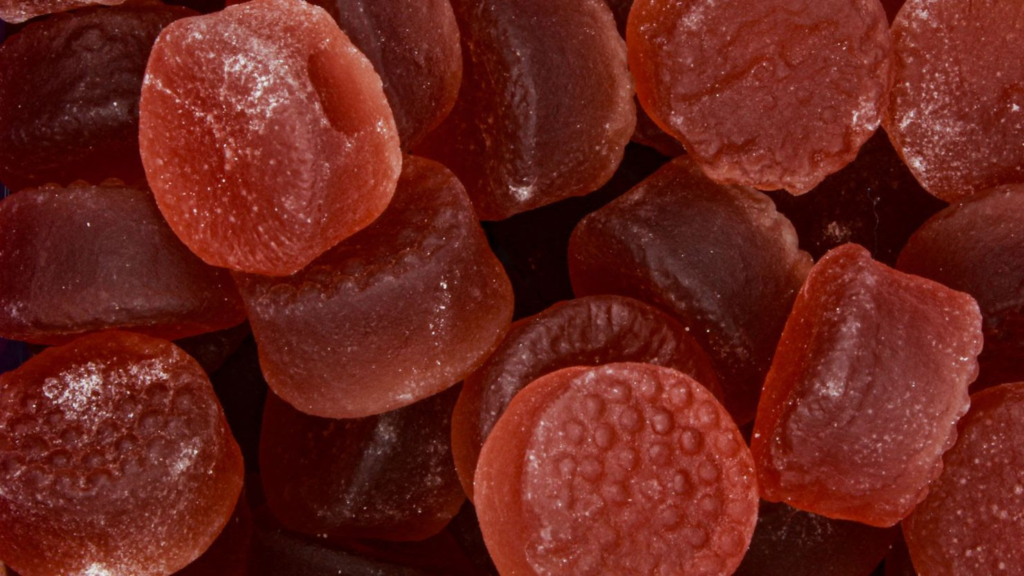By Amanda Musa, CNN

A new report suggests many young children who ingest melatonin while unsupervised are able to open the bottle or access it because bottles are left open. David McCue/iStockphoto/Getty Images
CNN
—
Melatonin products have become increasingly popular among US adults and a new report from the US Centers for Disease Control and Prevention says about 11,000 children have landed in the emergency room in recent years after ingesting it while unsupervised.
Melatonin is a hormone produced by the brain in response to darkness and regulates the body’s natural sleep-wake cycle, or circadian rhythm. Melatonin supplements, often sold as flavored gummies, can help someone struggling to fall asleep due to jet lag or sleep-wake disorders commonly seen in shift workers.
For the new report, researchers from the CDC and US Consumer Product Safety Commission identified cases involving children age 5 and younger who were taken to the emergency department between 2019 and 2022 after ingesting melatonin without supervision.

Using melatonin for sleep is on the rise, study says, despite potential health harms
Based on nearly 300 identified cases, the researchers estimated that 10,930 emergency department visits occurred during that time period, accounting for about 7% of all ER visits in the US for unsupervised medication exposures in infants and young children.
More than half of accidental ingestions involved children between 3 and 5 years old and the majority of visits did not involve additional medications.
While the type of melatonin ingested was not specified during most visits, the report shows that children had almost always swallowed the product. Based on emergency department visits where the dosage form was specified, researchers estimated that melatonin gummies were involved in nearly 5,000 cases.
Melatonin is a supplement and is not regulated by the US Food and Drug Administration. A recent study published in the journal JAMA found that 25 products labeled as melatonin gummies contained dangerous levels of the hormone while other contained no melatonin and contained only cannabidiol, or CBD.
“These discrepancies in ingredients or strength could pose additional risk” to children, the CDC researchers wrote.
Among emergency department visits with documentation of the melatonin container, about three-quarters involved bottles — suggesting that young children were able to open the bottles or that the bottles were not closed properly.

RELATED ARTICLE
Potentially dangerous doses of melatonin and CBD found in gummies sold for sleep
The researchers said it is important for adults who take these products and live in homes with young children to consider buying melatonin products with child-resistant packaging.
Meanwhile, the surveillance data used in the report comes with limitations, including a lack of “narrative” information recorded during emergency department visits. For example, the intended age of a melatonin product was not specified in nearly half of visits, therefore the involvement of a specific product type might be higher than reported.
Analyzing cases of unsupervised melatonin ingestion in young children during emergency department visits also underestimates the frequency of melatonin ingestions by children 5 and under, the researchers said.
The use of melatonin by US adults soared since the early 2000s, the CDC noted. The rise coincided with a 420% increase in emergency department visits for unsupervised melatonin ingestion by infants and young children between 2009 and 2020.
The new report says that the vast majority of unsupervised melatonin ingestions did not result in hospitalization.
However, more research is needed to determine if supervised use of melatonin for children is safe or needed. The use of melatonin appears “to be safe for most children for short-term use,” according to the National Center for Complementary and Integrative Health, a department of the National Institutes of Health, but it points out that it is unclear how much melatonin is suitable for children and whether its benefits outweigh its possible risks.
In general, melatonin side effects documented in children include drowsiness, headaches, agitation and increased bed-wetting or urination in the evening, according to the NCCIH. There is also the potential for harmful interactions with drugs sometimes prescribed for children’s allergic reactions.
GET CNN HEALTH’S WEEKLY NEWSLETTER
Sign up here to get The Results Are In with Dr. Sanjay Gupta every Tuesday from the CNN Health team.
The researchers for the latest study did not specify whether the children included in the surveillance data experienced any side effects.
Parents should always consult their pediatrician before giving their children melatonin, according to Dr. Cora Collette Breuner, a professor in the department of pediatrics at Seattle Children’s Hospital at the University of Washington.
“I also tell families, this is not something your child should take forever. Nobody knows what the long-term effects of taking this is on your child’s growth and development,” Breuner previously told CNN.
“Taking away blue-light-emitting smartphones, tablets, laptops and television at least two hours before bed will keep melatonin production humming along, as will reading or listening to bedtime stories in a softly lit room, taking a warm bath, or doing light stretches.”
CNN’s Sandee LaMotte contributed to this report.

Leave a Reply